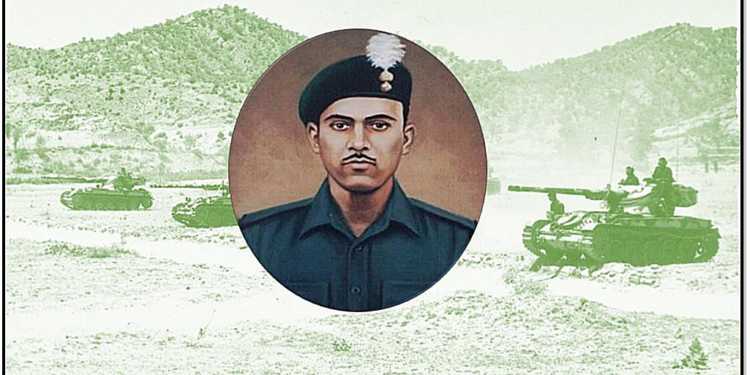The grounds of Khemkaran sector at Tarn Taran Sahib district were rumbling under the roar of the Patton tanks in the, the trump card of Pakistan, hell bent on humiliating India the way China did to us in 1962. Super confident of an outright victory, assisted wholeheartedly by the United States of America in terms of military assistance, the Patton tanks looked set for a huge trail of destruction, until they rammed into a man neither they could forget, nor would be forgotten by the pages of history.
He was a 32 year old Company Quartermaster Havildar in the 4th Battalion of The Grenadiers, Indian Army, his name was Abdul Hamid, and this is his story.
Born on 1st July 1933, at Dhamupur village in Ghazipur district, Abdul Hamid was a carefree lad from the word go. His father was a tailor by profession, and initially Abdul would help him at his shop, apart from handling his own education, which he completed till 8th standard from Junior High School, Deva. Abdul was a keen adventurer, who enjoyed sports like swimming, wrestling, hunting and gatka, the kind of sword fights popularized by martial clans in Sikhism. Except for his early marriage to Rasoolan Bibi at the age of 14, his life went at a smooth pace, till he decided to join the army.
In 1954, Abdul was recruited into the Indian Army at a training camp in Varanasi. Soon enough, he completed his training at the Grenadiers Regimental Center at Nasirabad, and in 1955, he was posted at 4 Grenadiers. He fought the Indo China war in 1962, as a part of the 7 Mountain Brigade, and came back dejected, as one of his officers, 2nd Lt. GVP Rao, had to pay with his life for this war imposed forcefully on the helpless Indian soldiers.
Soon after the war got over, he was posted at Ambala, where he was appointed the Company Quartermaster Havaldar of an administration company. It was however in the 1965 Indo Pak War, in the famous Battle of Asal Uttar, where Abdul Hamid immortalized himself in defending his motherland from the impending enemies.
Abdul Hamid was an expert marksman from the start, and despite being a non commissioned officer, his skills at anti tank guns could match the excellence of any well trained officer of that time. When 4 Grenadiers had to move without anti tank detachment commanders, Abdul Hamid was entrusted with the job of maintaining the anti tank RCL guns, and his execution changed the face of the 2nd Indo Pak War for once and for all.
On 9th September 1965, as Pakistani tanks bulldozed their way through the fields of Asal Uttar, Abdul Hamid set himself into action. Using a vintage World War II era 106 mm anti tank RCL gun, he went on a rampage, destroying three Patton tanks without a sweat. Funnily, the fourth tank was destroyed due to their own tank commander, who asked Abdul Hamid for directions. He couldn’t have got a better response from him than a shot to hell!
His daredevilry earned Abdul Hamid a recommendation for the Param Vir Chakra. Had he not been killed the following day, he would have been the 6th rare braveheart to have it won alive on his chest. However, that was not to be. The following day, on 10th September 1965, he destroyed two more tanks, when he was finally spotted by the Pakistani forces, and showered with a volley of shells, mortars and bullets. Unfazed, he destroyed another tank, and set his eyes on his eighth prize, when both his gun and the tank shot each other. Abdul Hamid succeeded, but not before the tank shell blew up his jeep and himself.
Abdul Hamid had reverted an impending loss, but at the cost of his own life. The Param Vir Chakra that could’ve been on his proud chest, was given posthumously in 1966, to his widow Rasoolan Bibi.
What happened later is a no brainer. Propelled by his supreme victory cum sacrifice, the Indian forces went on a rampage, destroying more than 40 tanks and capturing another 25-30 tanks. The Pakistanis abandoned each of their destroyed tanks and ran away, leaving their tanks in such a way, that the jubilant Indians renamed that entire area as Patton Nagar. This was all to the credit of one man, who not only made his nation proud, but also reminded the world of the might and courage that Indians could show in the face of the most difficult of adversities. If only Abdul Hamid had lived to tell his tale, his aura would have grown manifold.
Source:-
The Brave : Param Vir Chakra Stories by Rachna Bisht Rawat
http://www.rediff.com/news/special/param-vir-chakra-abdl-hamid-a-heros-hero/20150908.htm































